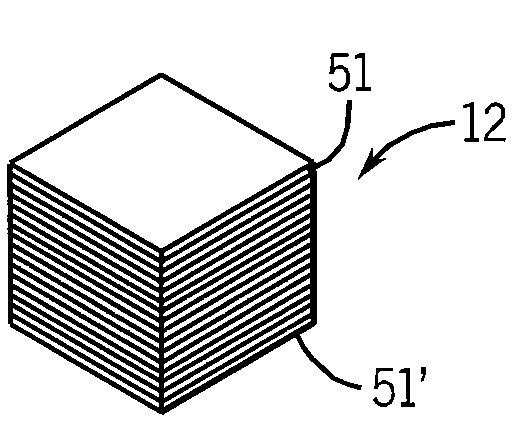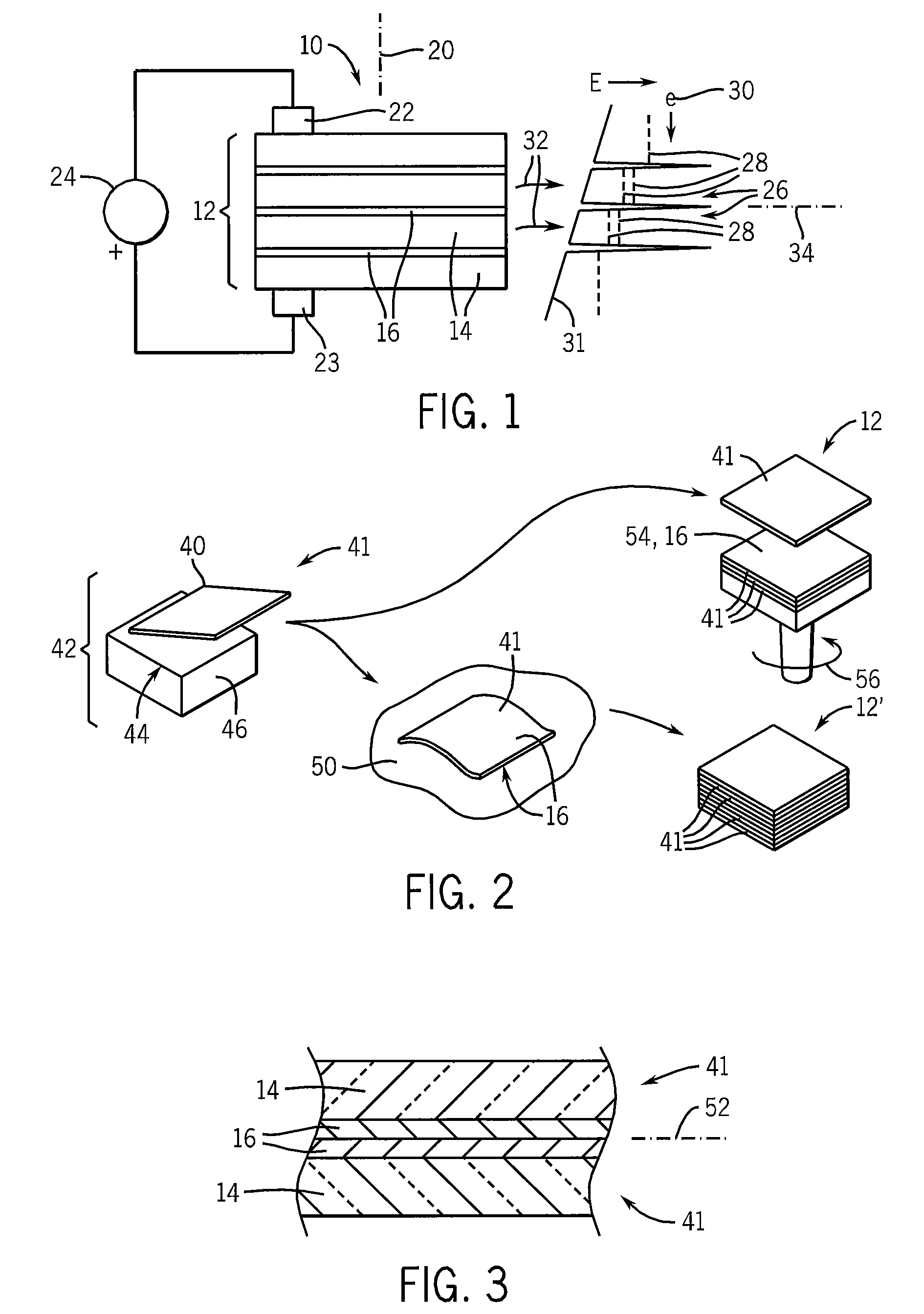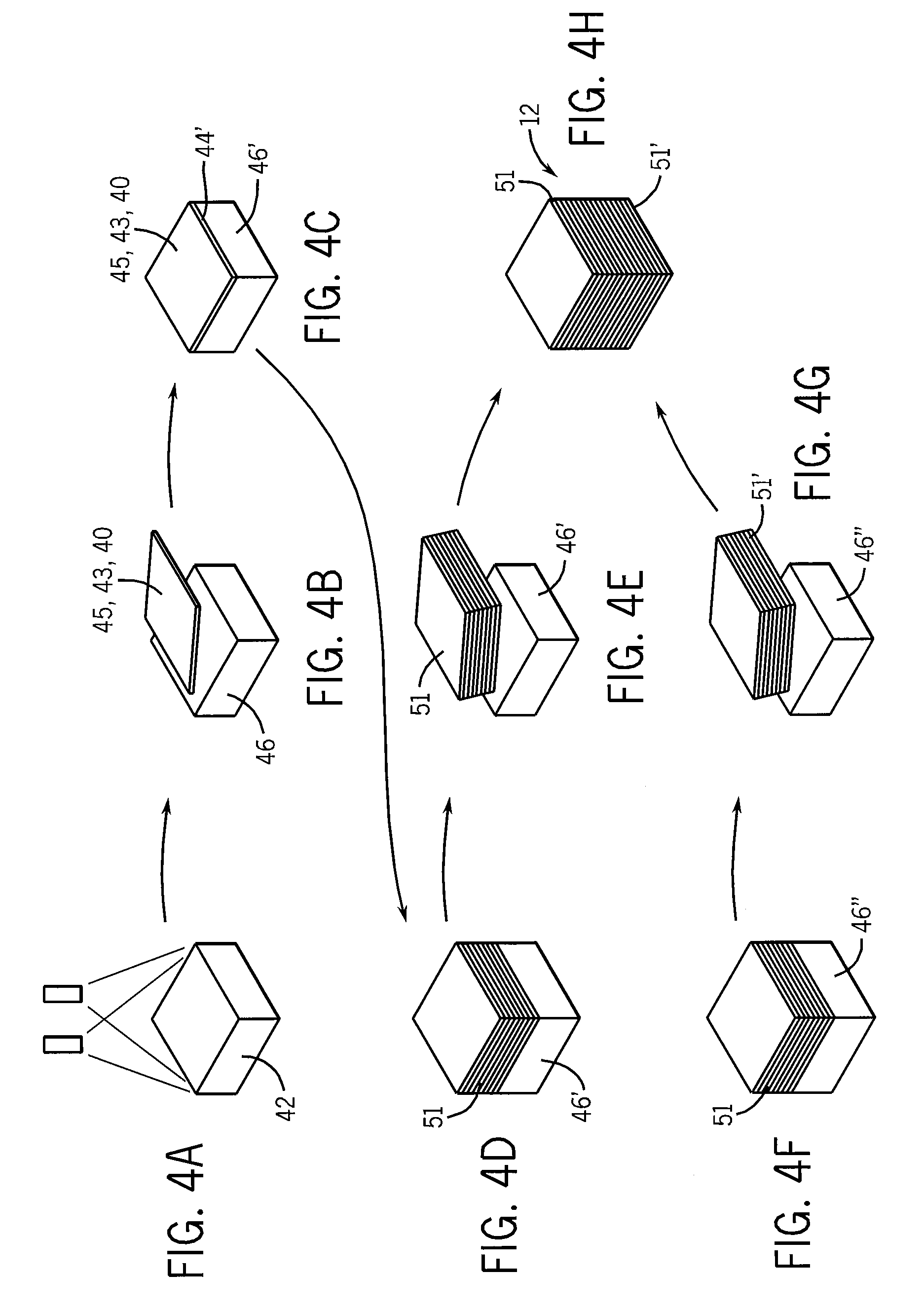Quantum-well photoelectric device assembled from nanomembranes
- Summary
- Abstract
- Description
- Claims
- Application Information
AI Technical Summary
Benefits of technology
Problems solved by technology
Method used
Image
Examples
Embodiment Construction
[0046]Referring now to FIG. 1, the present invention provides a quantum-well photoelectric device such as a silicon-based quantum cascade laser 10. The laser 10 employs a stack 12 of semiconductor layers 14 separated by barrier layers 16, preventing classical electron flow. The number of layers shown in FIG. 1 is greatly reduced for clarity.
[0047]The stack 12 extends generally along an axis 20 with each of the layers 14 and 16 generally perpendicular to the axis 20, and the outer layers 14 attached to electrodes 22 and 23 which may be biased with an electrical voltage source 24 to provide, in this example, a negative relative voltage at the top of the stack 12 at electrode 22, providing a source of electrons that are drawn to positive relative voltage at the bottom of the stack 12 at electrode 23.
[0048]The barrier layers 16 surrounding each semiconductor layer 14 provide a high dielectric electrical insulation producing quantum well 26 shown in a potential energy line 31 depicting g...
PUM
 Login to View More
Login to View More Abstract
Description
Claims
Application Information
 Login to View More
Login to View More - R&D
- Intellectual Property
- Life Sciences
- Materials
- Tech Scout
- Unparalleled Data Quality
- Higher Quality Content
- 60% Fewer Hallucinations
Browse by: Latest US Patents, China's latest patents, Technical Efficacy Thesaurus, Application Domain, Technology Topic, Popular Technical Reports.
© 2025 PatSnap. All rights reserved.Legal|Privacy policy|Modern Slavery Act Transparency Statement|Sitemap|About US| Contact US: help@patsnap.com



